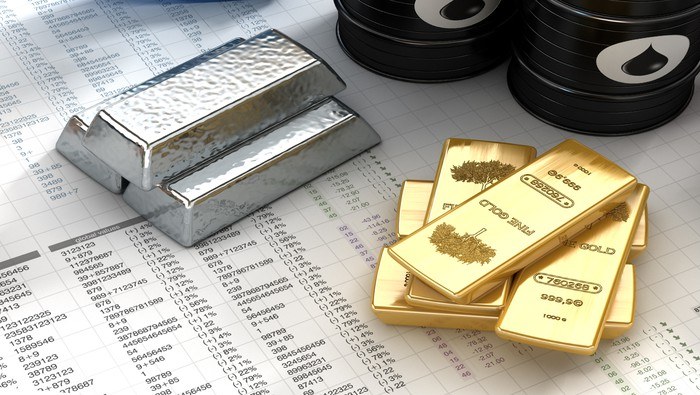The recent uptick in gold prices may face resistance at the $2000 milestone, while a dip below $1900 could lead to a decline towards the $1800 range, as gold's volatility is intertwined with the fluctuations of the US dollar and is influenced by interest rates.
Gold prices in Asia rose after the recent decline in bond markets, as lower yields boosted demand for the precious metal, while investors await more information on the US Federal Reserve's policy stance at the Jackson Hole symposium this week.
Bitcoin's correlations with various assets can provide insight into its price movements, with crypto-specific stocks like MSTR, COIN, and RIOT showing strong correlation due to their Bitcoin holdings, and silver demonstrating a higher correlation than gold as a commodity mirroring Bitcoin's price moves. However, correlations are not set in stone and can change rapidly, so these relationships may not always predict future price moves accurately.
Gold and silver prices rise as the weaker U.S. dollar index and dip in U.S. Treasury yields attract futures traders and bargain hunters, while anxieties build over upcoming speeches from the Fed and ECB on future monetary policy direction and the potential shift in the Fed's inflation goal.
Gold prices are slightly up and silver prices have hit a three-week high due to short covering and bargain hunting, with silver seeing significant improvement in its technical posture.
Gold has found support at the 50-Week EMA, suggesting consolidation and a potential target of $2000, but breaking below $1900 could have negative implications for the gold market; the bond markets and interest rates should be monitored to determine gold's future direction, and caution is advised due to the end of summer and the absence of major players in the market.
The gold market is in need of a catalyst to break its current downtrend, with the upcoming economic data playing a crucial role in determining its direction.
Gold prices maintained a positive weekly trend despite a dip influenced by Jerome Powell's remarks, with potential for further growth and a projected target of around $1981 based on market analysis.
Gold and silver prices are slightly up in quieter early U.S. trading, with traders and investors anticipating a more active market next week following the Labor Day weekend holiday.
Gold price is aiming to sustain above $1,920.00 as pressure builds on the US Dollar and Treasury yields, with the upcoming labor market data playing a crucial role in guiding the Federal Reserve's policy action.
Gold reaches its highest point in nearly a month due to weak U.S. economic readings, suggesting that the Federal Reserve may halt its interest rate hikes.
Gold prices are holding steady gains near session highs as the U.S. labor market showed stability with higher nonfarm payrolls but also a rise in the unemployment rate.
Gold prices remained stable near session lows as the latest data on the U.S. manufacturing sector showed improvement but still indicated contraction for the tenth consecutive month.
Silver and gold prices have slightly declined, with silver down 4% and gold down 0.5%, leading to speculation about the potential for traders to switch back to silver from gold.
Gold prices decline slightly as the dollar remains strong, with investors awaiting further signals on the U.S. Federal Reserve's monetary policy after an expected interest rate pause this month.
Gold prices slipped to a one-week low due to rising bond yields and a stronger U.S. dollar, as investors sought a hedge against global economic growth concerns.
Gold and silver prices are lower due to technical selling and a lack of fresh fundamental news, while rising crude oil prices have potential economic and marketplace effects.
The U.S. dollar's dominance in the gold market may be losing momentum, potentially leading to new all-time highs for gold as the dollar weakens, according to market strategist Carley Garner. She expects the U.S. dollar index to hold resistance below 105 points and eventually retest support at 99 points, which could be a game changer for gold, potentially pushing prices to $2,600 an ounce. Garner also highlights the resilience of gold and the potential for a selloff if the Federal Reserve shifts to a more neutral monetary policy stance. However, she is not as optimistic about silver, preferring to focus on gold.
The dollar index has been on a sustained rally since mid-July, leading to a slight decline in gold prices due to the inverse relationship between the two, but gold has held up well despite the strength of the dollar.
Gold prices rose on Monday, reaching their highest level in nearly two weeks, as the dollar weakened ahead of the U.S. inflation data, which could impact the Federal Reserve's interest rate decision.
Gold and silver prices are higher as both markets rebound from multi-week lows, while stocks in Asia and Europe rise and U.S. stock indexes are expected to open mixed; China's economic data shows signs of a fragile economic recovery and the U.S. dollar weakens.
Gold and silver prices rise as silver hits a two-week high, while the United Auto Workers strike in the US and concerns about the weakening Japanese yen impact trader and investor risk appetite.
